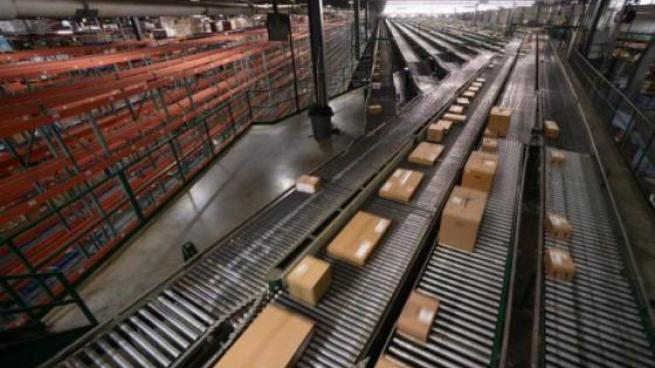Why a Responsible Reset Will Drive Retail’s Reinvention on the Path to Growth

Retail has faced many curveballs over the past two years. They have become accustomed to hearing that their industry is in a permanent state of flux. That doesn’t make it any less true. Or any easier to deal with. The business outlook remains highly uncertain, with supply chain and workforce disruption in particular keeping leaders awake at night.
Boardrooms are having to get used to a period of significant and rapid change, with no obvious end in sight. As such, the challenges their businesses face look very different than they did even a few years ago.
For leaders in retail, the list of priorities keeps stacking up. Right at the top, there’s the need to kick-start the next phase of sustainable growth. That means accelerating the adoption of digital, data, and artificial intelligence capabilities – with cloud at the core - and finally achieving a full integration between digital and physical retail.
It also means orienting the whole business around more sustainable operating models and a lasting commitment to environmental and social responsibility. This blend of responsible, technology-led, unified experiences and operations requires a profound transformation impacting just about every aspect of a retail business.
Harness the forces of disruptive growth
Those business leaders would be forgiven for wishing otherwise. Right now, their industry is grappling with multiple competing macroeconomic pressures and a highly unpredictable operating environment.
From geopolitical conflict and global supply chain disruption to persistent inflation and tightening consumer wallets, not to mention the long-tail impact of the pandemic on talent sourcing, simply maintaining profitability is challenge enough, let alone securing new growth.
It’s why some may be tempted to hunker down and wait for stability to return before pursuing transformation. But they could be waiting a long time.
Far better to embrace the forces of disruption and use them to reinvent and reset the business for growth. In doing so there are six areas, in particular, to address:
#1 Consumer offerings
Maintaining relevance for today’s consumers means aligning retail offerings with their purpose, in ways that are authentic to the brand. This means looking beyond a purely transactional relationship and engaging and understanding customers in a different way.
Partly, it’s a question of data — knowing who and how to engage with the consumer. But it’s also about reinforcing consumer ‘buy in’ for the brand by developing hyper-relevant, hyper-local offerings and experiences.
The growth of live streaming from retail stores is a great example. Nordstrom’s Livestream Shopping experience, for instance, offers engaging interactive retail events in everything from beauty and fashion to home furnishing.
#2 Unified experiences
Today’s explosion in consumer channels calls on retailers to develop consistent hyper-personalized unified experiences that blend online and offline into an integrated and coherent whole. Doing this while ensuring operational efficiency will require creativity, agility and a willingness to experiment.
Immersive platforms are a key growth area to keep an eye on. While the hype around the Metaverse can make it hard to distinguish concrete opportunities from hopeful speculation, retailers have been some of the most active early movers into today’s already-existing virtual spaces. Examples include Burberry’s classical art-inspired Olympia handbag experience and experiences like Vans World on Roblox.
#3 Fulfilment
With inflation biting, and customer expectations still rising, finding more efficient fulfilment models is increasingly vital. Many retailers are turning to local fulfilment (either on their own or with partners) which is grounded at the regional, community, neighborhood, and even street level. A combination of predictive analytical capabilities and agile supply chain and store network design is critical in making this work in practice.
Just look at how Hema, Alibaba’s supermarket chain, dedicated about half of each of its locations to fulfillment, while the other half of each location is split into regular retail space and in-store dining experiences. Customers who live within a 3km radius receive free 30-minute delivery on in-store items; they can also get next-day delivery for an expanded range of 20,000+ products from a traditional distribution center. Hema uses real-time data to inform what, and where, it stocks its goods.
#4 Sourcing
Resetting how the business sources products and raw materials will be key, not only in shoring up supply chain resilience in an uncertain world, but also in allowing the business to balance greater environmental and financial sustainability.
The focus should be on developing data-led capabilities like scenario (“what if”) modelling, predictive analytics, and near-real-time supply chain transparency, as well as rebalancing the mix of local, nearshore, and offshore suppliers.
#5 Talent
Given the persistence of post-pandemic labor market challenges, one of the most pressing priorities right now is attracting and retaining a motivated retail workforce. This, is the ideal time to reset the retail workplace, ensuring it’s truly supportive and flexible, that employees feel listened to, and that they have the skills, tools and autonomy to thrive in their roles and advance in their careers.
Digital technology has opened up all sorts of new options here. Amazon’s WorkingWell, for example, is an employee-developed program offering workplace wellness and healthy eating advice easily accessible on the go via a user-friendly mobile app.
#6 Data
As is clear from the above, a mature approach to data and analytics (including artificial intelligence) underpins virtually every aspect of the retail reset. Most retailers understand this, but achieving data maturity in practice often remains a stubborn challenge.
The ambition must be not only to acquire the right data, but to ensure its insights are trusted, accessible and actionable by the whole business. This has implications for the operating model and employee training and learning, as well as the underlying digital infrastructure of the organization.
Reset responsibly for greater growth
Given today’s pace of change and retailers intent on securing growth in the coming years, retailers must be willing to reinvent all of the above, and more. It won’t be easy, of course, but nothing worth doing ever is. The current environment is ripe for innovation and by kick-starting a responsible reset – the business will be better positioned to lead the race for future growth.





